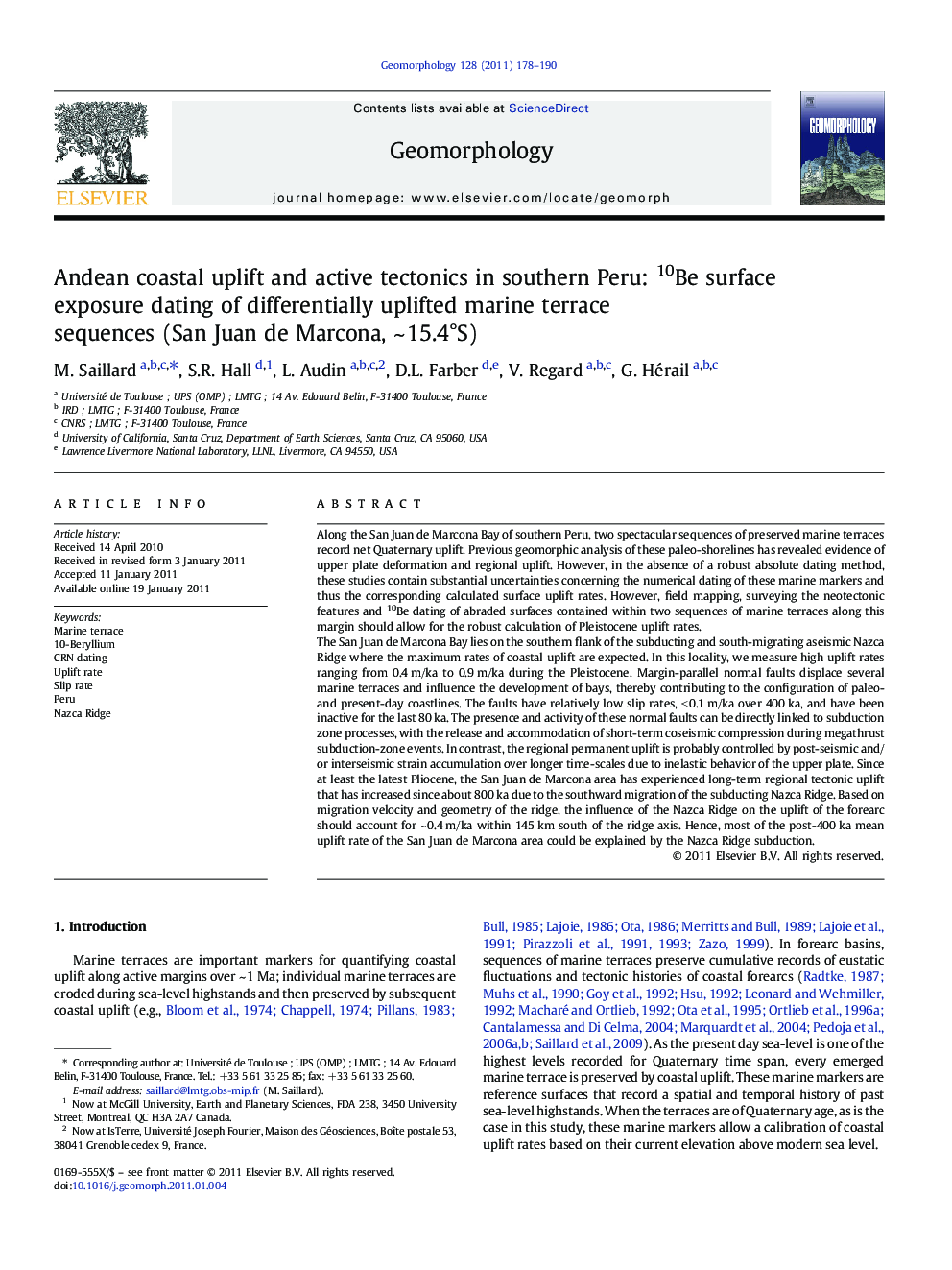| کد مقاله | کد نشریه | سال انتشار | مقاله انگلیسی | نسخه تمام متن |
|---|---|---|---|---|
| 4685685 | 1635504 | 2011 | 13 صفحه PDF | دانلود رایگان |

Along the San Juan de Marcona Bay of southern Peru, two spectacular sequences of preserved marine terraces record net Quaternary uplift. Previous geomorphic analysis of these paleo-shorelines has revealed evidence of upper plate deformation and regional uplift. However, in the absence of a robust absolute dating method, these studies contain substantial uncertainties concerning the numerical dating of these marine markers and thus the corresponding calculated surface uplift rates. However, field mapping, surveying the neotectonic features and 10Be dating of abraded surfaces contained within two sequences of marine terraces along this margin should allow for the robust calculation of Pleistocene uplift rates.The San Juan de Marcona Bay lies on the southern flank of the subducting and south-migrating aseismic Nazca Ridge where the maximum rates of coastal uplift are expected. In this locality, we measure high uplift rates ranging from 0.4 m/ka to 0.9 m/ka during the Pleistocene. Margin-parallel normal faults displace several marine terraces and influence the development of bays, thereby contributing to the configuration of paleo- and present-day coastlines. The faults have relatively low slip rates, < 0.1 m/ka over 400 ka, and have been inactive for the last 80 ka. The presence and activity of these normal faults can be directly linked to subduction zone processes, with the release and accommodation of short-term coseismic compression during megathrust subduction-zone events. In contrast, the regional permanent uplift is probably controlled by post-seismic and/or interseismic strain accumulation over longer time-scales due to inelastic behavior of the upper plate. Since at least the latest Pliocene, the San Juan de Marcona area has experienced long-term regional tectonic uplift that has increased since about 800 ka due to the southward migration of the subducting Nazca Ridge. Based on migration velocity and geometry of the ridge, the influence of the Nazca Ridge on the uplift of the forearc should account for ~ 0.4 m/ka within 145 km south of the ridge axis. Hence, most of the post-400 ka mean uplift rate of the San Juan de Marcona area could be explained by the Nazca Ridge subduction.
Journal: Geomorphology - Volume 128, Issues 3–4, 15 May 2011, Pages 178–190